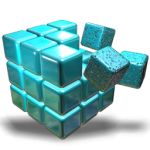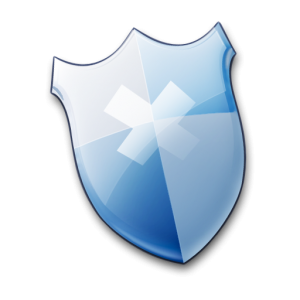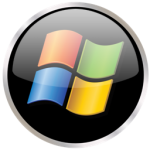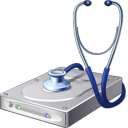 Tasks such as cleaning the registry after removing programs, scanning your hard drive for errors after a bad shutdown.
Tasks such as cleaning the registry after removing programs, scanning your hard drive for errors after a bad shutdown.
Performing visual inspections when you hear strange mechanical noises, running malware scans after signs of infection, and as-needed physical cleaning.
Table of Contents
- Clean the Windows Registry
- Run Malware Scans
- Run Virus Scan
- Check Event Viewer for Windows Errors
- Check Hard Drive for File System Errors
- Reset the Modem and Router
 Clean the Windows Registry
Clean the Windows Registry
The Windows registry keeps growing while you are using your computer. Its size will never shrink by itself. As the time goes, you will find your computer running more and more slowly. Clustered Windows registry is one of the most important factors that drag down your system speed. Therefore, regularly cleaning your registry is a great way to maintain your computer.
Run Malware Scans
Install, update and run a top-tier active antispyware program. There are many certified security programs to choose from and you will find links to some of them below. It is ultimately up to you to choose what you want to run, but I will also identify my favorite based on many years of personal use. But, never run more than one “active” security program of the same type, meaning only one antispyware, one antivirus and one firewall program. Running two programs of the same type can cause severe Windows stability problems. This limitation does not apply to “passive” security programs.
 Run Virus Scans
Run Virus Scans
Install, update and run a top-tier active antivirus programs. There are many certified security programs to choose from and you will find links to some of them below. It is ultimately up to you to choose what you want to run, but I will also identify my favorite based on many years of personal use. But, never run more than one “active” security program of the same type, meaning only one antivirus, one antispyware and one firewall program. Running two programs of the same type can cause severe Windows stability problems. This limitation does not apply to “passive” security programs.
 Check Event Viewer for Windows Errors
Check Event Viewer for Windows Errors
Event Viewer is a built-in Windows tool that displays detailed information about significant events (for example, programs that don’t start as expected or updates that are downloaded automatically) on your computer.
 Check Hard Drive for File System Errors
Check Hard Drive for File System Errors
Please make sure you have a current backup of your files before you run a check disk command. (Also, do this immediately if you see a message stating that your Windows “volume is dirty”).
 Reset the Modem and Router
Reset the Modem and Router
First of all, I am not talking about performing a hard reset, or restoring your modem/router to default factory settings. Instead, I am talking about “simply refreshing” your current settings that may have become congested during normal use by turning the power off and on again in a certain sequence.
Disk Image
If you want to restore your computer to the factory settings it came with out of the box, you need either a set of System Recovery DVDs or a built-in System Recovery Partition. Most computer manufacturers do not provide DVDs anymore and prompt you to create your own set using the Recovery Manager software on your computer. Sadly, most people ignore the reminders to makes these disks. Only a small fraction of people ever make them, and some of these don’t even know where they are when they need them.
With Windows 7, you can make your own customized image of the C Drive and save it onto another partition large enough to hold it, onto DVDs, or an External USB Hard Drive. Just know that you cannot make and save an image of your Windows installation onto the same partition.
While there are other 3rd party programs for making these images, like Acronis True Image or Norton Ghost, Windows 7 comes with a built-in Maintenance utility called Backup and Restore that does a pretty good job itself. Even if your computer won’t even boot to Windows to use it normally, you can also invoke it using the Startup Repair feature by pressing F8 at bootup.
Just know that when you reimage your C Drive, that it will overwrite everything stored on the C Drive, including your programs, printer setup, and any data stored on the C Drive. That is why I always partition my Windows and Programs on the C Drive, and my Data on a custom partition I create just for my Data, usually the D Drive. That way, I can restore an image on the C Drive without disturbing my Data on the D Drive.
Most brand name computers don’t come with the drive partitioned in a manner that allows you to save a custom image.
Clean Exterior of Computer
Cleaning a PC is a relatively simple process. Time should be taken at least quarterly to check the cleanliness of your PC. If you are uncomfortable or unfamiliar with taking a PC apart, a simple procedure can check whether your PC is in need of internal cleaning or not. Make sure to adequately ground yourself to eliminate the destructive static electricity that can damage internal components as well.
Look at the rear of the main PC box (either your desktop or tower case). You will see a grated circular (or in some cases square) hole covering a fan. Is the grating clogged with dust, dirt, hair or other foreign material? If so, your CPU is most likely in need of cleaning.
Be aware of your health too, since when you first let loose with the compressed air, you are going to create a huge cloud of nastiness which you want to avoid breathing in. Goggles might be a good idea here too. Generally speaking, you will be simply trying to remove as much of the visible dust as possible.
Caution: DO NOT SPRAY COMPRESSED AIR INTO THE CPU, FLOPPY OR CD. This can damage or misalignment of internal components, causing the drive to fail when reading media. Also, do not spray compressed air into the case/power supply at the rear of the CPU.
The outside of the case can be cleaned with an all-surface cleaner such as Formula 409 or Windex. DO NOT DIRECTLY SPRAY CLEANERS ONTO THE CASE. Rather, spray the cleaner on a lint-free towel, then wipe down the front and sides of the case, taking special care to avoid the operating doors of the CD-ROM, floppy drive and any other bay-mounted devices.
Clean Interior of Computer Case
Carefully take the cover off the CPU (Central Processing Unit). Use a vacuum or canned air to carefully clear out the dust that collects in a case and can clog up the fans. The dust you see accumulating on the rear fan vent was drawn through vents at the front of the PC, traveled through the PC (depositing some on the internal components) then was drawn through the power supply and pushed out the rear. If you blow dust into the case, there is more to accumulate on the expensive components inside the PC. Internal dust and other foreign material can cause overheating and eventually will lead to component failure.
Fan problems are by far the most common age-related computer maintenance issue. Fans are essential to your PC’s well being, and they will cease to run eventually, unless you work in an immaculately clean room. The higher off the floor you place the CPU, the better the airflow in and out of the case, and the longer the fans are going to last. If you place your CPU on the floor and allow pets and cigarette smoke in the room, your fans may need cleaning more often.
If the fans are constantly whirring, drawing dust, fibers, and other airborne debris into the case. Every six months or so, it can be smart to open the PC and take a look inside. Verify that all the fans are working; clean the vents, the fan blades, and heatsinks, etc.
If you keep your computer in a dusty environment, you should consider a “spring” cleaning more than once a year.
